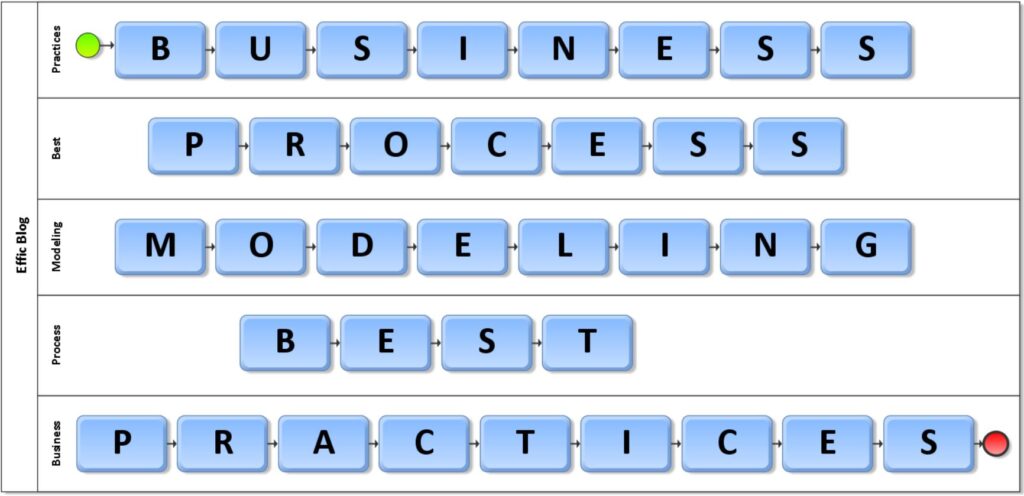There is A Comprehensive Guide on How to Make a Business Process Model
In the dynamic landscape of modern business, organizations strive to enhance efficiency, optimize operations, and achieve overall success. One crucial tool that aids in achieving these objectives is a Business Process Model (BPM). A Business Process Model provides a visual representation of a company’s processes, helping stakeholders understand, analyze, and improve workflows.
In this comprehensive guide, we will delve into the intricacies of creating an effective Business Process Model, exploring the key steps, methodologies, and best practices.
I. Understanding the Basics of Business Process Modeling:

A. Definition and Significance:
- Definition of Business Process Model.
- Importance of Business Process Modeling in organizational success.
- Benefits of implementing BPM, such as improved efficiency, cost reduction, and better decision-making.
B. Components of Business Process Modeling:
- Identifying and defining processes.
- Roles and responsibilities within processes.
- Inputs, outputs, and key performance indicators (KPIs).
- Tools and technologies for BPM.
II. Key Steps in Creating a Business Process Model:

A. Initial Assessment:
- Identifying the need for a BPM.
- Defining the scope and objectives.
- Conducting a thorough analysis of existing processes.
B. Process Identification and Documentation:
- Identifying core business processes.
- Creating a process inventory.
- Documenting each process with detailed steps.
C. Stakeholder Involvement:
- Identifying key stakeholders.
- Gathering input and feedback from stakeholders.
- Ensuring collaboration and communication throughout the BPM creation process.
D. Choosing the Right Methodology:
- Overview of popular BPM methodologies (e.g., BPMN, EPC, UML).
- Selecting the most suitable methodology based on organizational needs.
- Understanding the strengths and limitations of each methodology.
III. Implementing Business Process Modeling Methodologies:

A. BPMN (Business Process Model and Notation):
- Overview of BPMN.
- Symbols and elements used in BPMN.
- Creating a BPMN diagram step by step.
B. EPC (Event-driven Process Chain):
- Introduction to EPC methodology.
- Nodes, functions, and events in EPC.
- Building an EPC diagram for a business process.
C. UML (Unified Modeling Language):
- Introduction to UML for Business Process Modeling.
- Use case diagrams and activity diagrams in UML.
- Applying UML to represent business processes.
IV. Best Practices in Business Process Modeling:

A. Continuous Improvement:
- The role of BPM in continuous improvement.
- Implementing feedback loops for iterative enhancements.
B. Standardization and Consistency:
- The importance of standardized notation.
- Ensuring consistency across different processes and teams.
C. Integration with Other Business Tools:
- Integrating BPM with Enterprise Resource Planning (ERP) systems.
- Leveraging BPM for business intelligence and analytics.
D. Training and Communication:
- Training employees on BPM methodologies.
- Establishing effective communication channels for BPM updates.
V. Overcoming Challenges in Business Process Modeling:

A. Resistance to Change:
- Strategies to address resistance among employees.
- Communicating the benefits of BPM for individual and organizational success.
B. Lack of Resources:
- Strategies for resource allocation.
- Utilizing technology for cost-effective BPM implementation.
C. Scalability:
- Designing BPM with scalability in mind.
- Adapting BPM to accommodate organizational growth.
VI. Case Studies and Real-World Examples:

A. Successful Implementation Stories:
- Examining case studies of organizations that successfully implemented BPM.
- Analyzing the impact of BPM on their operations and outcomes.
B. Lessons Learned from Failures:
- Understanding common pitfalls in BPM implementation.
- Extracting lessons from failures to inform future BPM initiatives.
Things You Should Know
In conclusion, creating an effective Business Process Model is a multifaceted process that requires careful planning, stakeholder engagement, and adherence to best practices. By understanding the basics, selecting the right methodology, and implementing BPM with a focus on continuous improvement, organizations can unlock the potential for increased efficiency, agility, and overall success in today’s competitive business environment.
As technology continues to evolve, embracing Business Process Modeling becomes not only a strategic advantage but a necessity for organizations looking to thrive in the digital age.

1 thought on “How to Make a Business Process Model: In 6 Effective Steps”